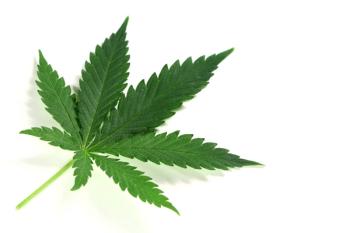
Top 10 Editorial Content from 2023
It’s that time of year again—the Cannabis Science and Technology (CST) top 10 articles from the previous year. CST published a wide variety of content throughout 2023¬—including a lot of video interviews from the Cannabis Science Conference series. Here is just a small snippet of some of the top articles, columns, videos, blogs, and podcasts that our readers enjoyed. Click through and see if any of your favorites made the list!
1. Extraction Science column
Title: The Transformation of Cannabis Terpenes from Harvest to Shelf
Summary: In this article, we explore the difference in chemical profile between fresh and dry cannabis flower and why manufacturers may choose to extract frozen or dry cannabis. Cannabis is known for its distinct aroma. This aroma is due to the terpene profile during the flowering stage of the growth cycle. The aroma is more complex and amplified after the product has been dried and cured. The terpene profile of the plant is vastly different when it is freshly harvested as opposed to dried and cured. Manufacturers of cannabis concentrate and vape products have brought a new terpene profile to market by extracting cannabis that has been freshly harvested and frozen. In this article, we explore the difference in chemical profile between fresh and dry cannabis flower and why manufacturers may choose to extract frozen or dry cannabis.
2. Featured Articles
Title: Cannabis Science Conference Spring 2023: Keeping Science at the Forefront of the Industry
Summary: Cannabis Science Conference Spring was held in Portland, Oregon from April 19-21, 2023. Here we provide a few highlights from the event.
Honorable Mention
Title: Does Size Matter for Performance? A Study of How Particle Size Influences Joint Smoking
Summary: In order to provide cannabis pre-roll manufacturers with tools to better control the delivery of cannabinoids from smoking pre-rolls, the authors examine the effect of particle size on cannabinoid delivery. This study investigated how the quantity of cannabinoids delivered via smoking is affected by particle size of the cannabis flower packed in the joint. For example, 1-mm particle size filling yielded more potent puffs than 3- and 5-mm particle sizes. The 5-mm particle size consistently led to a longer lasting joint regardless of flower used. The large amount of variability observed between smoking experiments suggested that improving joint architecture, of which particle size is a key component, will give consumers better and reliable experiences from the joint products they purchase.
3. Cultivation Classroom column
Title: Maximizing Cultivation Efficiency Through the Utilization of Genetic Technology
Summary: This article provides insights into the opportunities involving the genetic modification of cannabis. In our previous article, we touched on the prospective advantages of utilizing clustered regularly interspaced short palindromic repeats (CRISPR) in the production of high-quality cannabis cultivars. This biotechnology has the potential to boost resilience to pests and microbial agents commonly found in cannabis cultivation through the introduction and the extraction of specific genetic traits. This is especially advantageous considering the idiosyncratic challenges that are inherent in cannabis cultivation. These include, but are not limited to: susceptibility to a variety of pathogens, low production of rare or minor cannabinoids, uncontrollable or undesirable ratios of tetrahydrocannabinol (THC) and cannabidiol (CBD), and instability of cannabis genetics. Collectively, these challenges pose significant obstacles to achieving optimal yield and quality. This article provides insights into the opportunities involving the genetic modification of cannabis. With its precision and versatility, CRISPR technology can enable targeted genome editing to enhance pathogen resistance, optimize cannabinoid and terpene profiles, and improve overall plant quality. By harnessing the potential of CRISPR technology, the new frontier of medicine can continue to expand throughout the agricultural sector, meeting the growing demand for high-quality cannabis products, and paving the way towards a more sustainable future.
4. Tech Innovations column
Title: Innovations in Extraction Targeting Specific Wellness Goals
Summary: Searching for purer, minor cannabinoids is the goal of new extraction research as extractors dig deeper into the diversity of the plant.
Link:
5. Cannabis Analysis column
Title: Chromatography Theory, Part III: Calculating Elution Times and Capacity Factors
Summary: Part III of this series will delve into understanding how to optimize methods for chromatographic separations, Smith will also introduce the concepts of capacity factor and selectivity. In our ongoing quest to understand how to optimize methods for chromatographic separations, we will see how to calculate retention times and introduce the concept of the capacity factor. The capacity factor normalizes retention time so that these quantities can be compared to each other even if separations are performed under different conditions. The capacity factor will help us predict how well analytes will be separated from each other, and we will find that this depends upon an important concept from the last column, the fraction of time the analyte spends on the stationary phase, Fs.
6. Cannabis Voices Interview
Title: Vapor Pressure Deficit: Highlighting the Need to Maximize Cannabis Crops
Summary: The cannabis industry is evolving at a rapid rate. Growers are all looking for ways to produce the most profitable crops in an industry that lacks standardization and guidelines. One tool that has been beneficial in cannabis cultivation is vapor pressure deficit (VPD), which has been found to be very important for how nutrients are transported throughout the plant. Here, Hannia Mendoza-Dickey, University of Texas at El Paso, Department of Chemistry and Biochemistry; Robert Manes, Curtis Mathes Corporation; and Zacariah L. Hildenbrand, University of Texas at El Paso, Curtis Mathes Corporation, discuss the significance of VPD, why the cannabis industry is moving forward with this process, and a preview of their upcoming article titled “Intensity and Spectrum: The Role of Lighting in Vapor Pressure Deficit.”
7. Navigating the Lab column
Title: Measuring Microbiology, Part I: A Look at the Microbiological Contaminants in Cannabis
Summary: In part I of this series, we start the discussion on the important microbiological targets for the cannabis market and understand their significance as a threat to health and safety. Often when scientists or analysts speak of analysis and contamination in the cannabis market it is regarding chemical components such as heavy metals, pesticides, and other potentially hazardous chemical substances. In previous columns, we have taken a deep dive into the chemical aspects of cannabis analysis and now we change direction into another important study involving cannabis—microbiology. Chemical compounds are far from the only potential contamination found in cannabis products, in fact, in the world of consumer products, chemical contamination makes up for only a small amount of product recalls in comparison with microbiological contamination. In this column, we start the discussion on the important microbiological targets for the cannabis market and understand their significance as a threat to health and safety.
8. Peer-Reviewed article
Title: Purification and Isolation of Cannabinoids: Current Challenges and Perspectives
Summary: The current challenges and future perspectives of the purification of cannabinoids from cannabis extracts are presented in this review article.
The recent legalization of cannabis in many countries and its increased use in scientific and medical research as a result of its therapeutic properties have focused attention on the need for large quantities of highly purified cannabinoids. This is particularly important for the production of (new) analytical-grade standards, used as reference materials, and for the execution of clinical trials to test the biological activity of the single compounds that could potentially be used as new drugs or active pharmaceutical ingredients (APIs). To date, various purification strategies, usually based on several steps, have been proposed with different outcomes. However, all these methods have both advantages and disadvantages. This review will report on the challenges and future perspectives in the purification and isolation of major and minor cannabinoids from cannabis extracts.
9. Featured Video
Title: Cannabis Science Conference Live: Kim Stuck
Summary: Filmed onsite at Cannabis Science Conference Spring 2023, Kim Stuck, founder and CEO of Allay Consulting, shares her unique insights and experiences in the industry.
Link:
Honorable Mention
Title: Heating Technology in Cannabis Cultivation: An Interview with Jamie Tuinstra of Modine Manufacturing
Summary: Jamie Tuinstra, product manufacturer at Modine Manufacturing, sits down with Cannabis Science and Technology in an informative interview where he discusses how heat exchanger technology can help support energy efficiency, the equipment his company featured at the Cannabis Science Conference Fall 2023, and challenges heaters need to overcome with cannabis cultivation.
10. Noid Knowledge Podcast
Episode 14: Let’s Talk Science: Accreditation, Testing Labs, Chromatography and More with Dr. Julie Kowalski
On this episode, we are joined by Dr. Julie Kowalski of JA Kowalski Science Support LLC. Join us as we discuss Julie’s background, knowledge about chromatography and method development, some of the challenges in cannabis and hemp testing, and finally a little preview of the upcoming Cannabis Science Conference Spring conference for which Julie is serving as the analytical science track program chair.
Newsletter
Unlock the latest breakthroughs in cannabis science—subscribe now to get expert insights, research, and industry updates delivered to your inbox.




